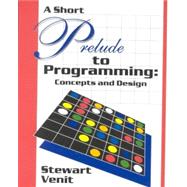| Preface | ix | ||||
|
1 | (32) | |||
|
2 | (5) | |||
|
2 | (1) | |||
|
2 | (2) | |||
|
4 | (3) | |||
|
7 | (1) | |||
|
7 | (6) | |||
|
8 | (1) | |||
|
9 | (1) | |||
|
9 | (2) | |||
|
11 | (1) | |||
|
12 | (1) | |||
|
13 | (1) | |||
|
13 | (5) | |||
|
14 | (1) | |||
|
15 | (2) | |||
|
17 | (1) | |||
|
18 | (4) | |||
|
18 | (1) | |||
|
19 | (2) | |||
|
21 | (1) | |||
|
22 | (11) | |||
|
22 | (2) | |||
|
24 | (1) | |||
|
25 | (1) | |||
|
26 | (1) | |||
|
27 | (1) | |||
|
27 | (1) | |||
|
27 | (1) | |||
|
28 | (4) | |||
|
32 | (1) | |||
|
33 | (36) | |||
|
34 | (4) | |||
|
37 | (1) | |||
|
38 | (7) | |||
|
38 | (2) | |||
|
40 | (2) | |||
|
42 | (2) | |||
|
44 | (1) | |||
|
45 | (4) | |||
|
45 | (2) | |||
|
47 | (2) | |||
|
49 | (1) | |||
|
49 | (6) | |||
|
49 | (2) | |||
|
51 | (2) | |||
|
53 | (1) | |||
|
54 | (1) | |||
|
55 | (14) | |||
|
55 | (3) | |||
|
58 | (2) | |||
|
60 | (1) | |||
|
61 | (1) | |||
|
61 | (1) | |||
|
61 | (2) | |||
|
63 | (4) | |||
|
67 | (2) | |||
|
69 | (38) | |||
|
70 | (5) | |||
|
70 | (1) | |||
|
71 | (1) | |||
|
72 | (3) | |||
|
75 | (1) | |||
|
75 | (6) | |||
|
76 | (1) | |||
|
77 | (3) | |||
|
80 | (1) | |||
|
81 | (6) | |||
|
81 | (2) | |||
|
83 | (1) | |||
|
84 | (3) | |||
|
87 | (1) | |||
|
87 | (5) | |||
|
87 | (3) | |||
|
90 | (2) | |||
|
92 | (1) | |||
|
92 | (15) | |||
|
92 | (7) | |||
|
99 | (1) | |||
|
100 | (1) | |||
|
100 | (1) | |||
|
100 | (2) | |||
|
102 | (3) | |||
|
105 | (2) | |||
|
107 | (36) | |||
|
108 | (6) | |||
|
108 | (1) | |||
|
109 | (4) | |||
|
113 | (1) | |||
|
114 | (4) | |||
|
114 | (1) | |||
|
115 | (1) | |||
|
116 | (2) | |||
|
118 | (1) | |||
|
118 | (6) | |||
|
119 | (3) | |||
|
122 | (1) | |||
|
123 | (1) | |||
|
124 | (5) | |||
|
124 | (2) | |||
|
126 | (2) | |||
|
128 | (1) | |||
|
129 | (14) | |||
|
129 | (5) | |||
|
134 | (1) | |||
|
134 | (1) | |||
|
134 | (1) | |||
|
135 | (1) | |||
|
136 | (4) | |||
|
140 | (3) | |||
|
143 | (42) | |||
|
144 | (6) | |||
|
144 | (3) | |||
|
147 | (2) | |||
|
149 | (1) | |||
|
150 | (6) | |||
|
150 | (2) | |||
|
152 | (3) | |||
|
155 | (1) | |||
|
156 | (6) | |||
|
156 | (2) | |||
|
158 | (4) | |||
|
162 | (1) | |||
|
162 | (8) | |||
|
163 | (3) | |||
|
166 | (1) | |||
|
167 | (3) | |||
|
170 | (1) | |||
|
170 | (15) | |||
|
170 | (6) | |||
|
176 | (1) | |||
|
176 | (1) | |||
|
176 | (1) | |||
|
176 | (2) | |||
|
178 | (4) | |||
|
182 | (3) | |||
|
185 | ||||
|
186 | ||||
|
186 | ||||
|
188 | ||||
|
189 | ||||
|
192 | ||||
|
193 | ||||
|
193 | ||||
|
197 | ||||
|
202 | ||||
|
202 | ||||
|
202 | ||||
|
206 | ||||
|
207 | ||||
|
208 | ||||
|
208 | ||||
|
210 | ||||
|
213 | ||||
|
213 | ||||
|
214 | ||||
|
220 | ||||
|
220 | ||||
|
220 | ||||
|
221 | ||||
|
221 | ||||
|
225 | ||||
| Appendix A Answers to Self-Tests | A-1 | ||||
| Appendix B Answers to Odd-numbered Review Exercises | A-19 | ||||
| Index | A-25 |









